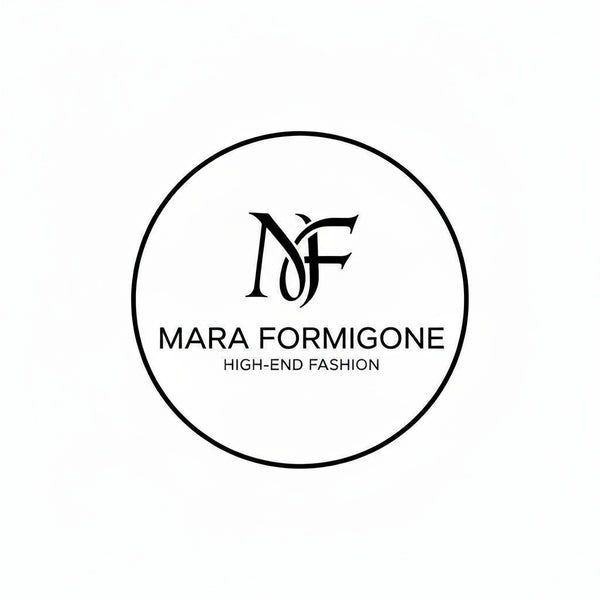A single mismatched accessory can disrupt the magic of even the most exquisite designer dress. Achieving a flawless look is about more than slipping into luxury—it requires an understanding of how every element, from fabric to jewelry, works together for the occasion at hand. Mastering this art helps you turn heads for the right reasons, ensuring your outfit feels intentional, sophisticated, and perfectly tailored to both you and your event.
Table of Contents
- Step 1: Assess Your Designer Dress and Desired Occasion
- Step 2: Select Complementary Luxury Accessories
- Step 3: Choose Elegant Shoes and Statement Bags
- Step 4: Incorporate Sophisticated Jewelry and Details
- Step 5: Evaluate and Perfect Your Complete Look
Quick Summary
| Key Point | Explanation |
|---|---|
| 1. Assess dress based on occasion. | Understand the dress code and event context to select the appropriate outfit. |
| 2. Choose complementary luxury accessories. | Use accessories to elevate your dress while ensuring color and design balance. |
| 3. Select elegant shoes and bags. | Match shoes and bags to the dress style for a cohesive appearance. |
| 4. Incorporate sophisticated jewelry. | Picking the right jewelry enhances the dress without overpowering it. |
| 5. Evaluate your complete look. | Analyze your outfit from multiple angles to ensure visual harmony and comfort. |
Step 1: Assess Your Designer Dress and Desired Occasion
Assessing your designer dress and the specific occasion demands strategic style planning. The right dress transforms from a garment into a statement when perfectly matched to its social context, ensuring you look polished and appropriate.
According to research on apparel selection Eric.ed.gov, understanding the nuanced relationship between dress design, color, and social setting is crucial. Start by critically examining three key elements: the dress silhouette, fabric weight, and color palette. A cocktail dress requires different styling considerations compared to an evening gala or a professional networking event. For instance, a structured silk sheath dress signals sophistication for corporate settings, while a flowing chiffon gown communicates elegance for formal evening events.
Key assessment criteria include evaluating the dress against specific occasion requirements. Consider factors like dress code, time of day, venue atmosphere, and expected guest demographic. A bright fuchsia cocktail dress might work perfectly for an evening party but could appear inappropriate in a conservative business conference. Your goal is harmonizing the dress design with the event’s unspoken style expectations, creating a seamless visual narrative that speaks to your fashion intelligence.
Warning: Never underestimate the power of context. A mismatched dress can undermine your entire presentation, regardless of how expensive or beautiful the garment might be.
Step 2: Select Complementary Luxury Accessories
Selecting the perfect luxury accessories transforms a designer dress from elegant to extraordinary. Your goal is creating a harmonious ensemble that elevates your overall look with strategic style choices.
Research from Eric.ed.gov emphasizes the critical importance of understanding how accessory elements interact with apparel design. When choosing complementary accessories, focus on three primary considerations: color coordination, proportional balance, and design aesthetic. For instance, a structured silk dress pairs beautifully with minimalist metallic jewelry, while a flowing chiffon gown invites more intricate statement pieces. Exploring essential fashion accessory techniques can help refine your selection process.
Carefully evaluate your accessories through a strategic lens. Consider the neckline of your dress when selecting necklaces metallic tones that match your dress hardware create visual continuity. Earrings should frame your face without competing with the dress silhouette choosing understated studs for elaborate gowns or dramatic drops for simpler designs. Your clutch or evening bag should complement rather than exactly match your dress a slight variation in texture or tone adds sophisticated depth to your overall look.
Warning: Over-accessorizing can quickly derail an otherwise impeccable outfit. Remember the golden rule of luxury styling less is more when working with high end designer pieces.
Step 3: Choose Elegant Shoes and Statement Bags
Selecting the right shoes and statement bag is an art form that can elevate your designer dress from beautiful to breathtaking. Your goal is creating a cohesive look that speaks volumes about your style intelligence and fashion awareness.
According to research from Eric.ed.gov, successful accessory pairing involves understanding the intricate relationships between design elements such as color, line, and proportion. When choosing shoes, consider both comfort and visual harmony. A structured cocktail dress demands sleek stilettos or pointed pumps that mirror its architectural lines, while a flowing maxi dress pairs beautifully with elegant sandals or strappy heels. Essential types of designer shoes can provide inspiration for your perfect footwear selection.
Your statement bag should complement your dress without competing for attention. Metallic clutches work wonderfully with solid color dresses, while textured bags add depth to simpler silhouettes. Pay attention to scale matching a petite dress with a compact bag and a voluminous gown with a more substantial accessory. Consider the event context carefully some venues demand understated elegance while others invite bold statement pieces.
Warning: Never sacrifice comfort for style. The most stunning shoes and bags become liabilities if they compromise your ability to move and enjoy the event with confidence.

Step 4: Incorporate Sophisticated Jewelry and Details
Incorporating sophisticated jewelry and details transforms your designer dress from a stunning garment into a personal style statement. Your mission is to curate accessories that enhance your dress without overwhelming its inherent elegance.
Research from Eric.ed.gov highlights the critical importance of understanding design interactions between apparel and accessories. Jewelry selection requires strategic consideration of your dress neckline metallic tones and design complexity. For a plunging V neck dress choose a delicate pendant necklace that follows the line of the neckline. With a high boat neck or turtle neck opt for statement earrings that draw attention upward. Essential fashion jewelry insights can provide additional guidance on selecting the perfect pieces.
Beyond jewelry consider additional sophisticated details that elevate your ensemble. A silk scarf draped artfully can add dimension to a simple dress while a vintage brooch transforms a classic silhouette. Subtle details like matching your metal tones across jewelry belt buckle and shoe hardware create a cohesive and intentional look. Think of these elements as the punctuation marks that complete your fashion narrative.
Warning: Resist the temptation to over accessorize. One statement piece is often more powerful than multiple competing elements. Let your dress be the canvas and your accessories the carefully chosen brushstrokes.
Step 5: Evaluate and Perfect Your Complete Look
The final step in styling a designer dress is a meticulous evaluation that transforms your ensemble from good to extraordinary. Your objective is creating a cohesive look that communicates sophistication and intentional styling.
Research from Eric.ed.gov emphasizes the importance of holistic design assessment considering how individual elements interact and contribute to the overall visual narrative. Start by photographing your complete outfit from multiple angles examining color balance proportional relationships and overall silhouette. Look for visual harmony between your dress accessories shoes and jewelry. Pay attention to how different elements complement each other creating a unified aesthetic. Timeless looks with elegant dresses can provide additional inspiration for refining your styling approach.
Consider the functional aspects of your outfit as well. Move around test your shoes walk a few steps to ensure comfort and mobility. Check that your accessories do not impede movement or create awkward adjustments. Every element should feel like a natural extension of your personal style creating an effortless and confident appearance.

Warning: Trust your intuition. If something feels off about your outfit after careful evaluation do not hesitate to make subtle adjustments. Confidence is the ultimate accessory that elevates any designer dress.
Elevate Your Style With Handpicked Designer Dresses and Accessories
Struggling to perfectly style your designer dress for that special occasion can feel overwhelming. The article highlights how crucial it is to balance dress silhouette, accessories, shoes, and jewelry to create a sophisticated, high-fashion look. Achieving this harmony ensures your outfit not only impresses visually but also suits the social context beautifully. If you want to avoid the common styling pitfalls and present a polished appearance that feels effortless and confident, strategic shopping is key.

Discover a curated collection of luxury dresses, shoes, and statement bags carefully selected to complement each other at Maraformigone. Our assortment features top designers like Gucci, Prada, and Alexander McQueen giving you the power to create a cohesive, fashion-forward ensemble right from the start. Don’t wait to transform your wardrobe and own your look with pieces designed to shine together. Begin your stylish journey today by exploring our exclusive designer dresses and elevate your entire outfit with the perfect luxury accessories. Your next standout fashion moment is just a click away.
Frequently Asked Questions
How do I assess my designer dress for a specific occasion?
Evaluate your designer dress by considering its silhouette, fabric weight, and color palette. Ensure it aligns with the event’s dress code, time of day, and venue atmosphere, tailoring your choice to harmonize with unwritten style expectations.
What luxury accessories should I choose to complement my dress?
Select accessories that coordinate in color and design with your dress. Aim for simplicity and proportion—pair a structured dress with minimalist jewelry and a flowing gown with bolder statement pieces for an elegant overall look.
How do I pick the right shoes and bag for my designer dress?
Choose shoes and bags that enhance your dress without overshadowing it. For instance, sleek heels work for structured dresses, while sandals suit flowing designs; your bag should match the scale of your dress to maintain balance.
What type of jewelry best suits my designer dress?
Select jewelry that complements the neckline of your dress while maintaining a cohesive look. For example, choose a delicate pendant for a plunging neck and statement earrings for a high neckline to accentuate your features without overwhelming your outfit.
How can I evaluate my complete look before the event?
Assess your entire outfit by photographing it from different angles to analyze color balance and silhouette. Move around in your ensemble to ensure comfort and make any necessary adjustments for an effortless appearance.
What should I do if something feels off about my outfit?
If something doesn’t feel right, trust your intuition and make subtle adjustments. Focus on achieving a cohesive look, and don’t hesitate to swap out accessories or rethink your shoe choice to enhance overall confidence.
Recommended
- Designer Skirt Styling Guide for a Chic Luxury Look – MaraFormigone
- Dress with suit jacket: Style It Like a Pro – MaraFormigone
- How to Style Maxi Dresses for Any Occasion – MaraFormigone
- Discover fuschia cocktail dresses: The Ultimate Style Guide – MaraFormigone
- Designer Mode: Alles, was Sie 2025 wissen müssen – LM Fashion Online Store

